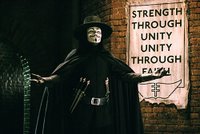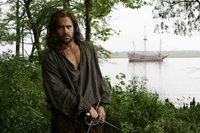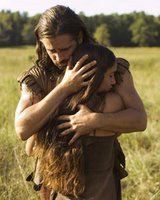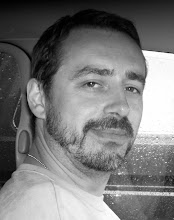
Humans are unique among all the species on the planet in that they alone can conceive of a world without violence. And yet, lurking deep in the primitive jelly of our lizard brains, the capacity and predisposition for violence smolders. Is it possible for us to actualize a violence-free society when violence has such an innate attraction for humanity?
A History of Violence explores this question through a lean, precise, character-driven drama, featuring superb performances and nary a wasted moment on screen. The great Canadian director David Cronenberg also rewrote Josh Olson’s script, so the result on screen is classically Cronenbergian, though at first glance the film may seem an incongruous part of his cinematic oeuvre.
The film begins by riffing on a Rockwellian dream of an American small town that probably never was. Tom Stall (Viggo Mortensen) owns an apple-pie diner in the middle of town, loves his wife and kids, and has a loving wife (Edie, played by Maria Bello) that arranges a sexual liaison that involves roleplaying and a cheerleader costume (“Holy cow!” says Tom. Indeed.). Everything changes when two brutal psychopaths enter Stall’s Diner with the obvious intent of robbing the till and killing everyone inside. Tom lashes out and messily kills the thugs, with the result that he is proclaimed a hero, is splashed all over the media, and attracts to town Carl Fogerty (Ed Harris), a mobster from Philadelphia who is convinced that Tom is actually Joey Cusack, a sadistic crime kingpin.
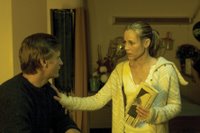
The film hinges on how violent acts both attract and repel and how they change us and how we relate to others. One character’s brutal takedown of an ignorant bully implicates the audience in a direct way. It’s hard not to cheer at the revenge of an underdog, yet at the same time the beating he dishes out lends an uneasiness. And A History of Violence features two sex scenes that, while fairly explicit for the mainstream, actually are key to the plot, the latter of the two scenes a dark mirror of the first that reveals a hidden stratum to one character’s sexuality.
Cronenberg’s sure directorial hand is evident throughout A History of Violence--in the unconventional camera angles in the fight scenes; in the gory wetness of the makeup that shows the after effects of violence; and in the subtle idea of violence as a virus that, once unleashed, infects others. Cronenberg has also gradually revealed himself to be a superb director of actors—he coaxes excellent performances from his cast, performances that were shamefully overlooked by the Academy Awards, incidentally.
A deceptively simple film, even the title has several tiers—the main character who may have a violent past; America’s history of violence; and the violent record of the human race. There are buried layers to A History of Violence that slowly reveal themselves on subsequent viewings and that, I submit, is the mark of a great film.
Though its visual style works to best effect on a theatre screen, A History of Violence is now available on DVD in a clear and vibrant widescreen transfer. The disc includes an essential making-of documentary called Acts of Violence that actually enhances understanding of the film.
---
Directed by David Cronenberg
Written by Josh Olson, based on the graphic novel by John Wagner and Vince Locke
Starring:
Viggo Mortensen....Tom Stall
Maria Bello....Edie Stall
Ed Harris....Carl Fogarty
William Hurt....Richie Cusack
Ashton Holmes....Jack Stall

